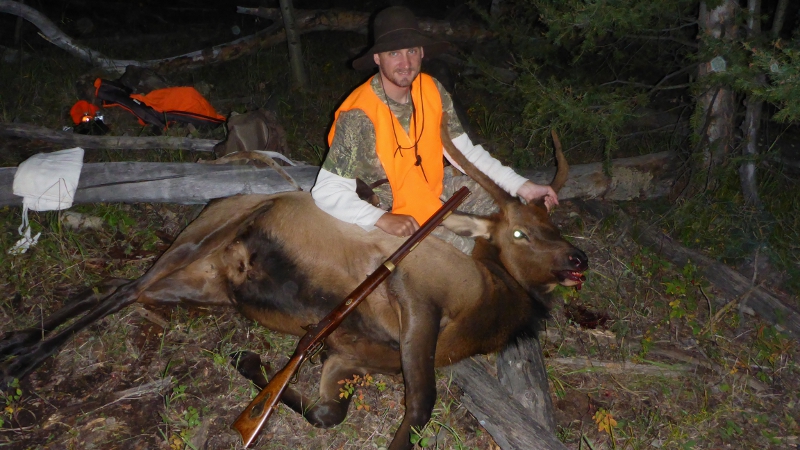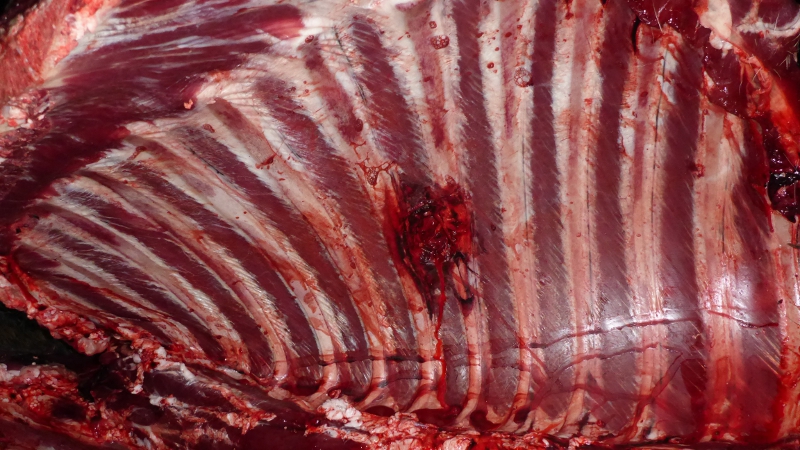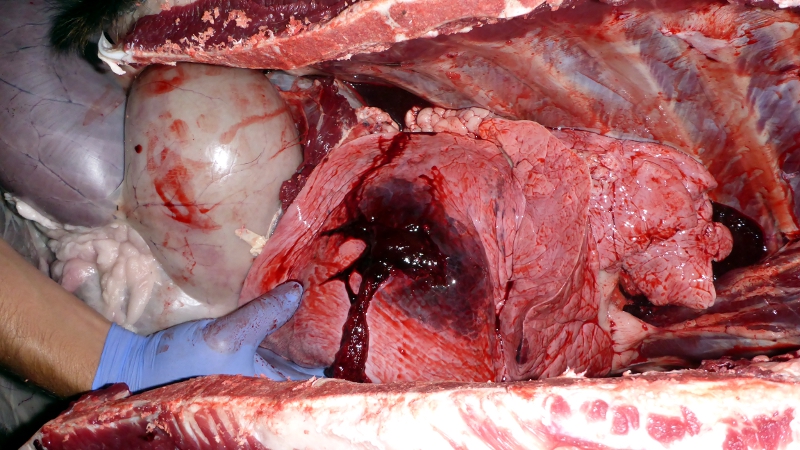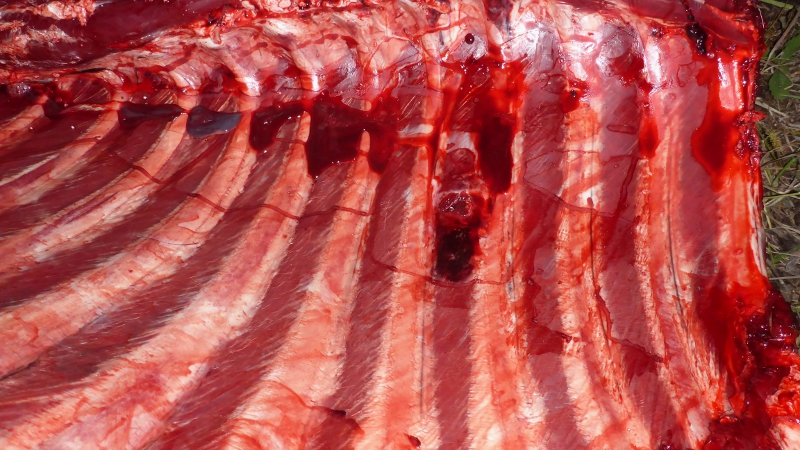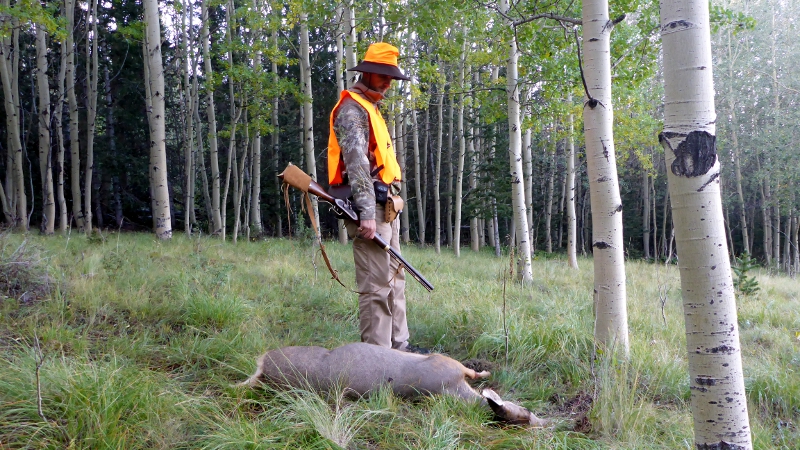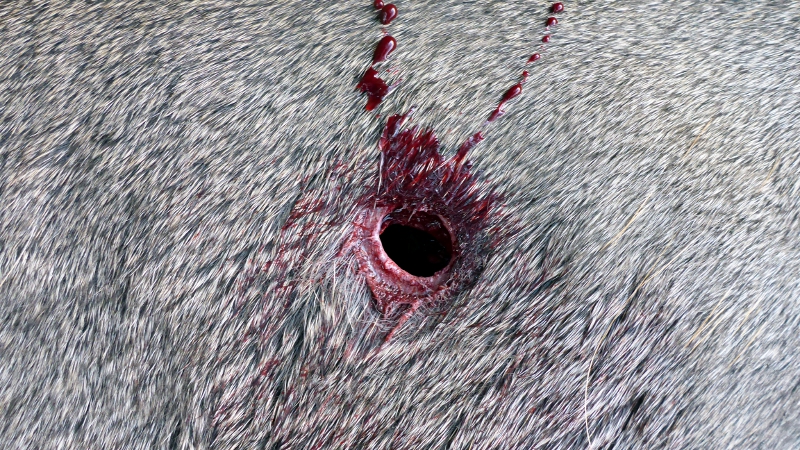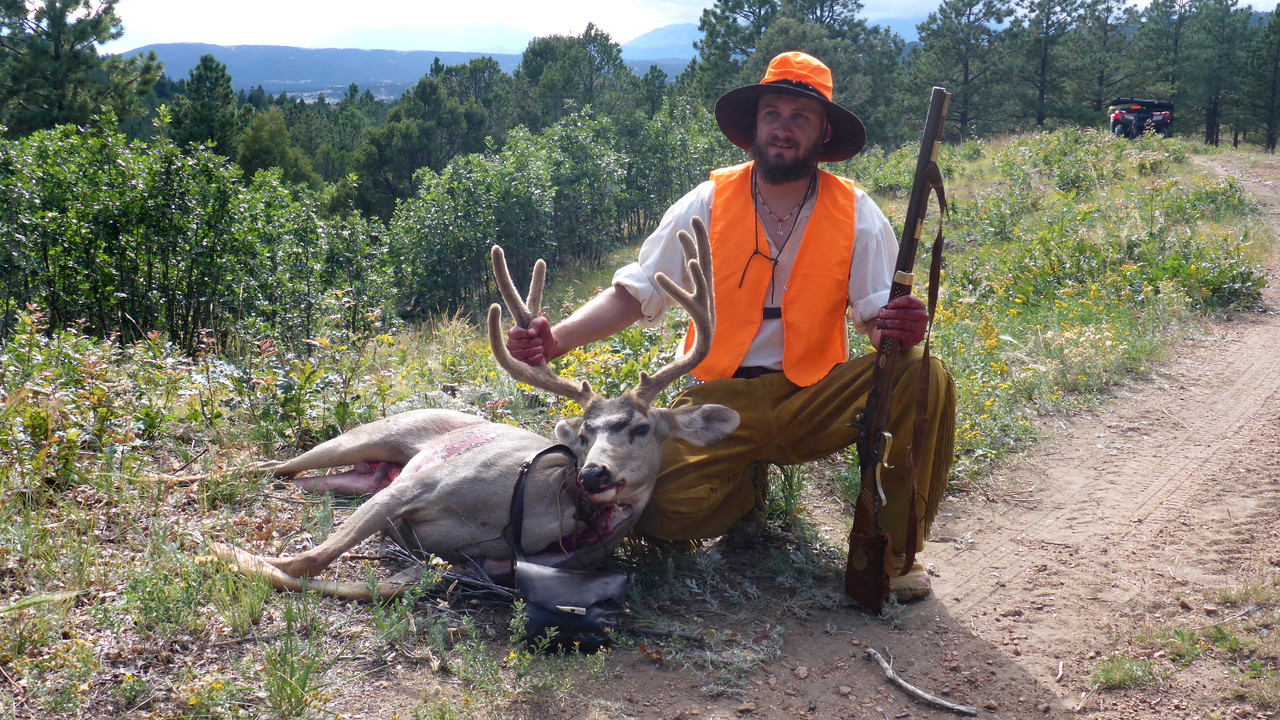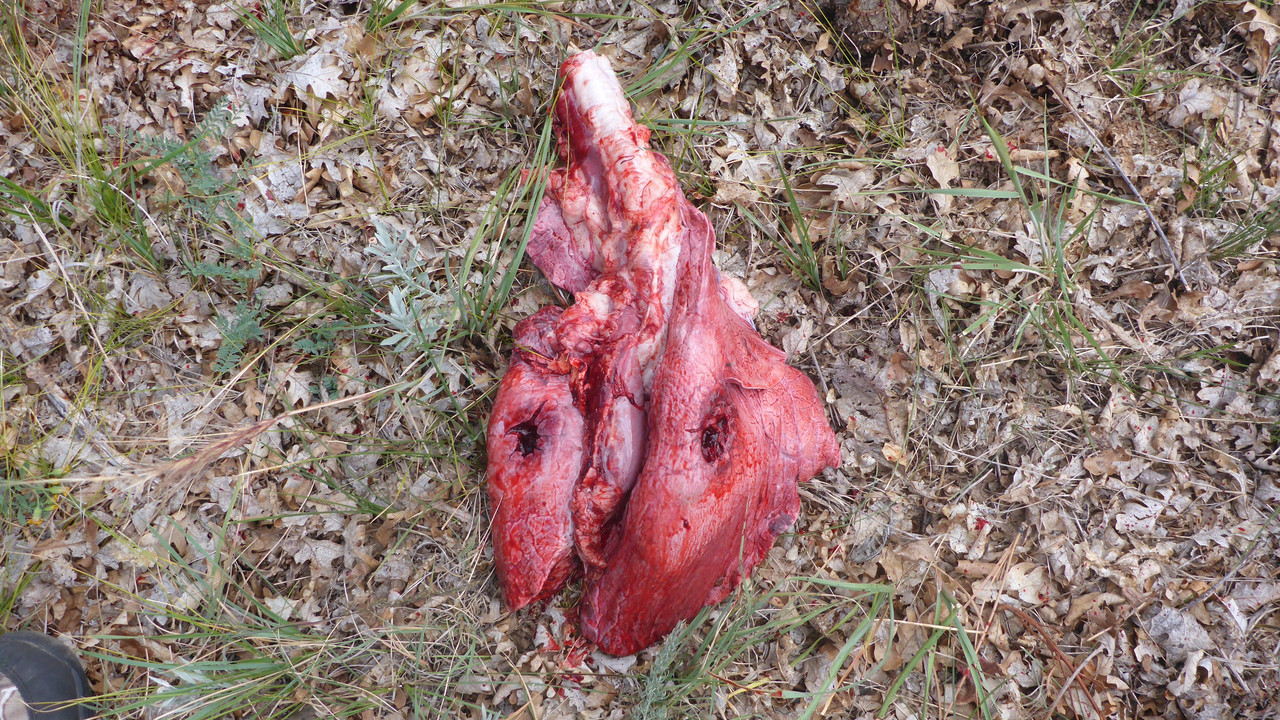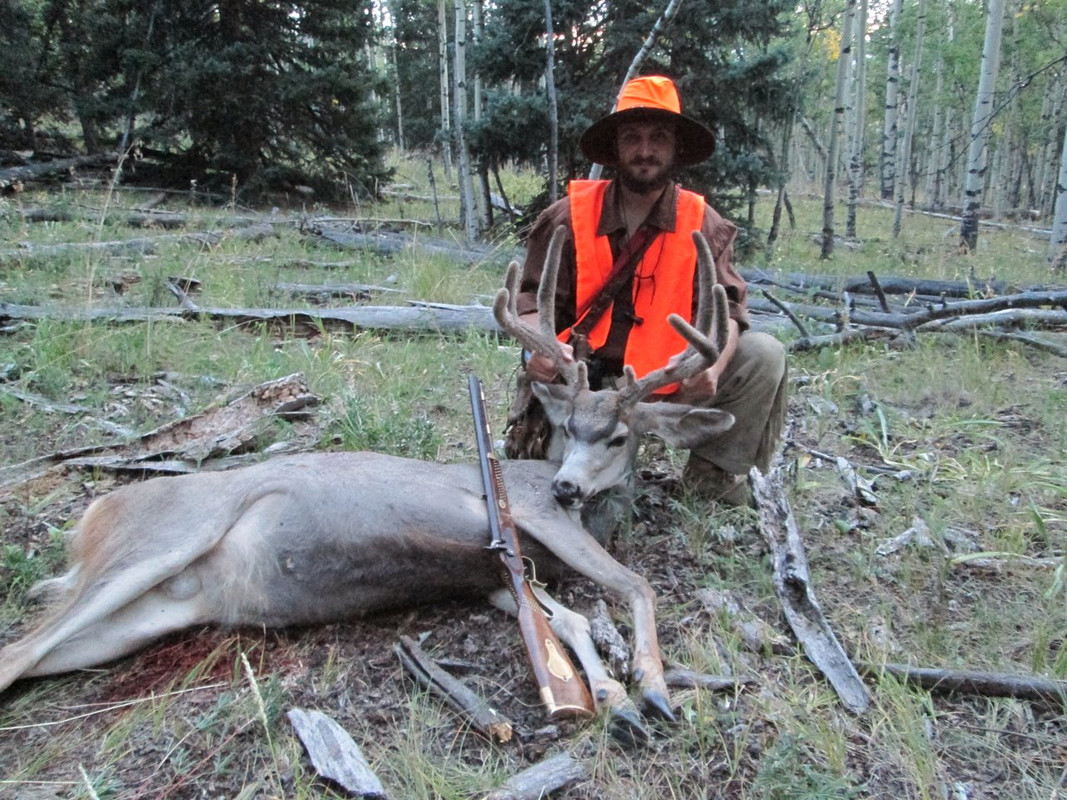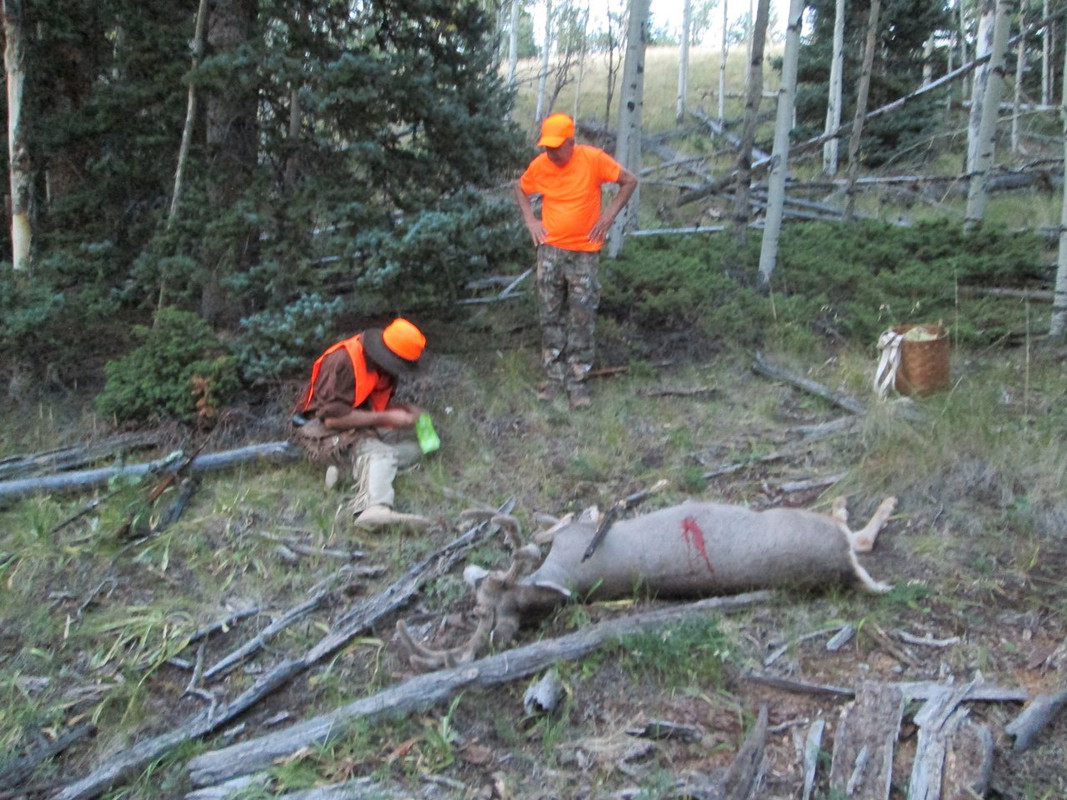Loads in our rifles are as diff as the rifles themselves. They may look some what alike n some shoot alike but in the end they are always just a bit diff
-
This community needs YOUR help today. We rely 100% on Supporting Memberships to fund our efforts. With the ever increasing fees of everything, we need help. We need more Supporting Members, today. Please invest back into this community. I will ship a few decals too in addition to all the account perks you get.

Sign up here: https://www.muzzleloadingforum.com/account/upgrades -
Friends, our 2nd Amendment rights are always under attack and the NRA has been a constant for decades in helping fight that fight.
We have partnered with the NRA to offer you a discount on membership and Muzzleloading Forum gets a small percentage too of each membership, so you are supporting both the NRA and us.
Use this link to sign up please; https://membership.nra.org/recruiters/join/XR045103
You are using an out of date browser. It may not display this or other websites correctly.
You should upgrade or use an alternative browser.
You should upgrade or use an alternative browser.
Good deer hunting load
- Thread starter Tankerchief
- Start date

Help Support Muzzleloading Forum:
This site may earn a commission from merchant affiliate
links, including eBay, Amazon, and others.
85 grains of one brand of powder may equal 75 grains of another. Another consideration is where one intends to hunt, Whitetails in one state might be no bigger than a large dog and other states run well over 200 pounds field dressed.
Ballistic data was taken from Lyman Black Powder Handbook, edited by Keith Rammage, published in 1975. Actual point of impact at a given range for any load would depend more on the sight setup on the rifle. As noted above, he is hitting the target at 50 yards which would indicate a point of impact around 10 to12 + / - inches low at 100 yards unless the ball is still rising after the 50 yard mark. At that slow velocity the ball will lose over a third of its velocity and over half its energy at 100 yards and the drop (or change in point of impact) will be very noticeable. Only range testing will reveal his actual point of impact at 75 and 100 yards. The data was shared to illustrate rather feeble ballistic performance with a very light load. A heavier load/greater muzzle velocity reduces drop at extended ranges due to higher velocity along the entire bullet path. My suggestion would be to shoot the heaviest load you can shoot accurately out to your likely maximum shot range, but I hunt out west where things will hunt you back. That and $6.00 will get you a cup of coffee at most drive throughs. Hope this answers your question.
Some things to consider about pure lead balls that readily expand, velocity, and exit wounds: Velocity alone will not necessarily produce exits until expansion is reduced enough for that particular body shot to exit. Not saying that is a bad thing, as more expansion can equal more terminal trauma as long as penetration is sufficient. Penetration doesn't seem to be an issue w prb's but higher velocities can preclude exits bc massive expansion puts the breaks on. [Think parachute on a dragster.] IME, most hunters get this exactly backwards and think that w expanding balls/bullets, more velocity=more penetration. When you learn the velocity/distance dynamic of your projectile you can learn where to hit at what distance, to kill most effectively and get exits. Not perfectly, but effectively. Close range/highest velocities, stay in the heart/lung, non bone vital area where violent expansion can do its dirty work and, depending on the charge, still probably produce an exit. When you get to a distance where your load is no longer producing much, or any expansion, you can move your shot into the shoulders, still hit vitals, plant the animal and lose very little meat due to limited expansion/trauma. If you use the close range kill zone for that longer shot, you will kill, but expect more tracking. You will probably still get an exit. I know it is not apples to apples, but I recently watched my son-in-law dispatch a nice sized wt buck at about 20 yds w a 385 GP conical ahead of 70 grns of t7, 2f. I'm guessing velocity was around 12-1300 fps. The 1" mushroom was recovered on the far side of a quartering shot w little or no bone hit. [maybe a rib] From past experience w slower projectiles penetrating more than faster ones, my guess is that at about 50 to 60 yds that bullet would have exited due to a bit less expansion. [It came very, very close as it was.] I know that is not a round ball, but the dynamics of expansion aren't changed here. That buck bled more out of its entry wound than than almost any animal I have ever seen shot. If you eliminate expansion altogether w some kind of hard cast, by all means, run that ball/bullet as fast as it will go. Try out your prb's in 20" of sopping wet phone books at a variety of distances w the load you like to get an approximation that will be helpful. Just my 2cnts. As Absoroka mentioned, reducing your aiming trajectory window is probably a better reason to use a heavier charge---w in reason, of course. SW
Indeed. That's always been my policy with all critter killing tools.I am usually 180 degrees out on 64Springer on this issue.
Accuracy is the most important criteria. Figure your minimum energy level for a humane kill and find an accurate load above that level. You have an accurate load. It doesn't hurt to have the energy that 85 grains gives you in case you smack some solid bone. You want through and through bullet passage for an enhanced blood trail.
I know you want to go lower...save that for punching paper. Punching deer, keep the most accurate hotter load.
Sounds like you are just about there. Keep getting comfortable your rifle….Then go hunting.So, I haven't taken my .50 Hawkin out hunting yet because I'm still getting comfortable shooting it. I have had good results with 85 grains of FF Schuetzen keeping a group under 2 inches. I working on patches, etc. Question is how low can I go on a powder charge for whitetails? I don't see myself shooting much past 50 maybe 75 yards.
Thanks in advance.
-Mike
After I get the gun sighted in then I shot at something I think is as hard as a deer body. I have used 4 in. Phone books with 1/4 to 1/2 inch playwood behind it. My load goes through that and keeps going. Sometimes I will put the plywood in front and behind the books . My load with RB. still goes through and beyond . I have used a scrap piece of 2×6 pine wood with a large stump behind that. My load will go through the 2x6 and go 1/4 inch or better into that stump. I shoot 50 yards to 75 yards same results. Stop asking others and and have fun trying things on your own. I don't like pain nor like wasting powder.So, I haven't taken my .50 Hawkin out hunting yet because I'm still getting comfortable shooting it. I have had good results with 85 grains of FF Schuetzen keeping a group under 2 inches. I working on patches, etc. Question is how low can I go on a powder charge for whitetails? I don't see myself shooting much past 50 maybe 75 yards.
Thanks in advance.
-Mike
BACK IN THE 70’S, I WAS 36 YRS OLD. THERE WAS A MOUNTAIN MAN GROUP IN BOONE WHO ATTACHED THEMSELVES TO THE OUTDOOR DRAMA I WAS DIRECTING. GENUINE, HONEST, REAL MEN AND WOMEN WHO MADE MY PRODUCTION MORE AUTHENTIC. I TOOK UP THE LIFE OF A BP MAN WITH A .50 CAL. CVA MOUNTAIN RIFLE. THIS WISE CLOSE GROUP TAUGHT ME TO JUDGE MY LOAD BY THE “CRACK” SOUND WHEN I SHOT. I SPENT MANY HOURS AT THE RANGE AND FINALLY FOUND THE SONG I WANTED FROM MY RIFLE. 120 GRAINS OF 3F GOEX BEHIND A PATCHED BALL MEASURED IN MY HAND. THAT “CRACKING” LOAD WAS DEADLY…1” GROUP AT 100 YRDS, BUSTING CLAY BIRDS AT 125YDS. MY FIRST DEER DROPPED WHERE HE STOOD, DEAD BRFORE HE HIT THE GROUND 80 YARDS AWAY. NO CHRONOGRAPH…JUST LISTENING WITH THE RIGHT EAR. “HEAR THE CRACK ED”
redbeard381
32 Cal
My hunting loads are as follows:
I shoot 85 grains FFFg Old Eynsford with a .545 ball with pillow ticking in my .54 flintlock as it groups about 3" at 100 yards.I shoot 65 FFFg Goex and same ball patch combo out of my plains rifle (Hawken "clone") which is my .54cal 100 yard competition load and shoots like a laser beam.
Just this last season I took a doe at 80 or so yards with the flintlock broadside and it went through shoulder, double lung, down the entire cavity and out the rear far side hip. Took a buck with the Hawken at 60 and the "light" 65 grain charge and it did the same thing, but the ball stopped under it's hide undeformed on the far side rump.
The most important thing is that both these guns shoot dramatically different with a clean cold bore vs a warm dirty bore. In competition I shoot a fowling shot and spit patch both, then they group. For hunting I need to shoot to their cold bore point of impact and I patch with ballistol/water so the patch freezes less. Bore butter works. Spit, especially with a dirty bore, like if you foul the barrel pre hunt, will turn to frozen cement unless you load right before you shoot. I typically hunt stalking from the ground so I want to be loaded at daybreak. This is my first post. Hope this helps.
I shoot 85 grains FFFg Old Eynsford with a .545 ball with pillow ticking in my .54 flintlock as it groups about 3" at 100 yards.I shoot 65 FFFg Goex and same ball patch combo out of my plains rifle (Hawken "clone") which is my .54cal 100 yard competition load and shoots like a laser beam.
Just this last season I took a doe at 80 or so yards with the flintlock broadside and it went through shoulder, double lung, down the entire cavity and out the rear far side hip. Took a buck with the Hawken at 60 and the "light" 65 grain charge and it did the same thing, but the ball stopped under it's hide undeformed on the far side rump.
The most important thing is that both these guns shoot dramatically different with a clean cold bore vs a warm dirty bore. In competition I shoot a fowling shot and spit patch both, then they group. For hunting I need to shoot to their cold bore point of impact and I patch with ballistol/water so the patch freezes less. Bore butter works. Spit, especially with a dirty bore, like if you foul the barrel pre hunt, will turn to frozen cement unless you load right before you shoot. I typically hunt stalking from the ground so I want to be loaded at daybreak. This is my first post. Hope this helps.
Deer are not wet phone books nor are they ply wood.
Ditt44
32 Cal
To Steve's point in post #24
Anecdotal experience:
I took a button buck this year with a .50 ball and 60 grains 3F at just under 25 yards. The ball broke the near side rib, both lungs, far rib and upper right front leg bone and was found between meat and hide. 177 grain ball to start and 176.2 grains after. Massive energy dump caused immense bruising to both shoulders and rib cage. He still got up and ran most of 50 yards.
For me this is a max 70 yard hunting load, but if I do my part, it's a dead deer every time. I think this experience applies to what I have read many times of the closer the deer, the less likely you get a pass thru. Now in my case, two ribs and a thicker upper leg bone really slowed that ball. I feel pretty confident that if I missed the leg bone that I would have had an exit. But that's part of hunting, maybe the slight angle of the impact point directed the ball forward into the shoulder when I expected a side to side pass-thru.
Anecdotal experience:
I took a button buck this year with a .50 ball and 60 grains 3F at just under 25 yards. The ball broke the near side rib, both lungs, far rib and upper right front leg bone and was found between meat and hide. 177 grain ball to start and 176.2 grains after. Massive energy dump caused immense bruising to both shoulders and rib cage. He still got up and ran most of 50 yards.
For me this is a max 70 yard hunting load, but if I do my part, it's a dead deer every time. I think this experience applies to what I have read many times of the closer the deer, the less likely you get a pass thru. Now in my case, two ribs and a thicker upper leg bone really slowed that ball. I feel pretty confident that if I missed the leg bone that I would have had an exit. But that's part of hunting, maybe the slight angle of the impact point directed the ball forward into the shoulder when I expected a side to side pass-thru.
Last edited:
ohio ramrod
75 Cal.
- Joined
- Aug 21, 2008
- Messages
- 7,473
- Reaction score
- 2,202
I am with the most accurate load group, any thing above 50 grain will give you all the killing power you need if hit in the right place. Shot placement is more important than impact power
I run 110 of 2f in my 54, flattens deer with authority in close. I get 3 inch groups at 100 yards. I hunt in steep terrain so, don't want anything moving much after the hit.
Now that's what I'm talking about!
Mike in FL
45 Cal.
My Lyman/Pedersoli GPR like 60 grains of 3F. Nearly same hole at 50 yards. Less or more opens groups. I reckon that's because a 1:48 barrel can be very picky. Anyway, I plan to never change from that 60 grain load. Patch is lubed 010.
True, very true. But you cannot deny that shooting ML projectiles into lined up milk jugs filled with water and then recovering said projectile is not interesting.Deer are not wet phone books nor are they ply wood.
Kind of like I don't shoot off of a bench and sandbags when I'm up in a tree stand.
At the end of the day, it's all good.
Last edited:
Hey John, I like your testing. One thing I have found after testing a lot of different types of bullets is that it is best for game approximation to always have some of your wet/flesh material in front of any hard medium. All on game strikes [except when you hit a tree 1st] hit some amount of fluid filled flesh 1st, which initiates expansion in ways that hard media [wood etc] do not. I have seen bullets that hit ply or 2x 1st not open up much at all, and then penetrate farther into wet media than if they hit the wet media 1st which forces them to expand more. Wood grain deforms projectiles in ways that flesh does not. Water [in tissue] is a violent expander of bullets. Pure water, like in all the cool YouTube vids w gallon jugs, is not much help in gauging on game performance either. It is too violent. Fun, but some folks dismiss any bullet that they think fails their 'jug test' when in reality, flesh is far different than pure h2o. It is between water and solids in composition. I like to place 2-3 wet phone books in front of half inch ply, then maybe 4-5 more followed by another pc of ply backed by enough wet book to recover the bullet. This is a reasonable simulation of a deer shoulder shot. [That is why I suggested about 20" of medium to recover the bullet.]. Same w quarter inch ply could represent deer rib/body shots. Wet is the key and dry media don't tell the correct story. Place your books, newspapers etc. in a 5 gallon bucket and completely saturate them. Soak your ply too. I know that this is not perfect flesh/blood/bone comparison but it is very close. I haven't tried this yet but I want to test jugs filled w cheap, store bought jello mixed w fine sawdust as a medium. The ballistic gelatin used by the 'pros' is really less useful than what you are already doing. Too little h2o [if any]. Happy testing. SWAfter I get the gun sighted in then I shot at something I think is as hard as a deer body. I have used 4 in. Phone books with 1/4 to 1/2 inch playwood behind it. My load goes through that and keeps going. Sometimes I will put the plywood in front and behind the books . My load with RB. still goes through and beyond . I have used a scrap piece of 2×6 pine wood with a large stump behind that. My load will go through the 2x6 and go 1/4 inch or better into that stump. I shoot 50 yards to 75 yards same results. Stop asking others and and have fun trying things on your own. I don't like pain nor like wasting powder.
Nobody said they were. Try reading more closely. They can be a good approximation. I have shot enough deer to know. And... try the testing before commenting. Plenty of folks smarter than you or me have been doing this. Thanks SWDeer are not wet phone books nor are they ply wood.
I've done more shooting that most on here.
It's a torture test, it does not replicate what that projectile does on game, but how it stands up against water, carpet, plywood.
If you want to see real world results, ask for that. All the modern day data, ballistics, doesn't change squat with a simple patched round ball.
Asking for a good deer hunting load....
It's a torture test, it does not replicate what that projectile does on game, but how it stands up against water, carpet, plywood.
If you want to see real world results, ask for that. All the modern day data, ballistics, doesn't change squat with a simple patched round ball.
Asking for a good deer hunting load....
Similar threads
- Replies
- 25
- Views
- 1K
- Replies
- 10
- Views
- 792



